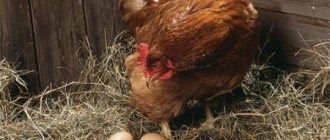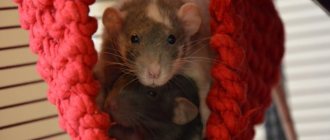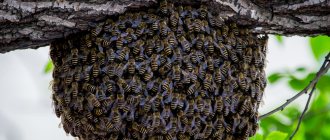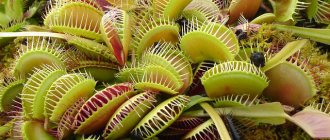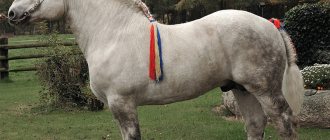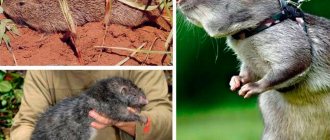Hello, our dear readers! We are all accustomed to treating chickens as poultry, and few people remember that these feathered beauties once lived freely in the wild, and did not dream of moving to a warm chicken coop! And today wild chickens enjoy their freedom, although there are much fewer of them on the planet than before domestication.
We are pleased to present you some very interesting material! Today we will talk about birds that played an important role in poultry farming - they were the ancestors of absolutely all breeds existing today! So, let's look at what they are.
Systematic position and area
Mostly wild chickens live in Indonesia, the Philippines and South Asian forests. The order of gallinaceous or chicken-like wild birds includes jungle fowl, which are accustomed to settling in the forest zone of the tropics. The genus of these birds belongs to the pheasant family and includes 4 species known to science:
- gray;
- banking;
- Ceylonese;
- green.
As you can see, by the name of the wild chicken one can understand some of the characteristics of the species. Wild chickens prefer to choose forest boundaries as their permanent habitat, where there are many bushes, low-growing trees, and grass thickets. Here it is easier for them to get food and hide from enemies. Exceptions are wood grouse, black grouse and partridges that live in the taiga. Here the birds have adapted to eating pine needles and seeds of local plants.
You can find the gallinaceous bird living in the wild on almost every continent, with the possible exception of Antarctica. There are several families in total:
- guinea fowl;
- pheasant;
- Tooth-billed partridges;
- craxes;
- big-legged.
Scientists have long been able to confirm the presence of family ties between pheasants and some species of domestic and wild chickens. This fact is due to the possibility of crossing these species with each other. In addition, they have external signs of similarity, which usually include:
- birds make similar sounds;
- the plumage of males is motley and bright;
- identical sexual behavior and sexual differentiation.
In closely related species one can also observe similarities in these characteristics, with the only difference being that the resulting crosses will not have the ability to reproduce due to the difference in the genome.
Habitats
Wild chickens live in the forested areas of South Asia, Indonesia and the Philippines. The jungle fowl received its name for its affinity to the forest zone of the tropics.
But the biotope of these representatives of the pheasant family can be called edge. Wild birds prefer to live not in the thick of the forest, where it is difficult to get food, but on its border - in bushes, open forests, and grassy clearings.
Most representatives of the chicken order lead just such a lifestyle. But there are exceptions: they extend mainly to the taiga zone, where wood grouse, black grouse, and partridges have adapted to feed on the needles and seeds of plants in this zone.
Wild ancestors of domestic chickens
The main theory of the origin of modern domesticated chickens is closely related to the Jungle Bank breed. It is believed that it was from this wild bird, living in the forests of Southeast Asia from India to the Philippines, that almost all breeds of domestic chicken known today came from.
In addition to the banker, according to scientists, such breeds as Ceylon, gray and green junglefowl are also important in the development of poultry breeding. Moreover, all four species are united by one genus - combed chickens. Domestication is believed to have begun around 8,000 years ago.
Origin
The first mentions of wild chickens are found in the countries of the East and South, in tropical regions.
They are the ancestors of all known chicken breeds in the world, of which there are currently about 700. They were domesticated and crossed, producing new species and hybrids. In their pure form, representatives are found only in hot countries in the natural environment, in nurseries and nature reserves.
It is known that jungle chickens, or bank chickens as they are also called, were domesticated as early as 6 thousand years BC. e. in the southeastern region of Asia, and about 3 thousand years BC. e. they became poultry already in India.
Charles Darwin argued that it was from these birds that all the currently known breeds of domestic laying hens originated, because there are striking similarities with some of them.
Wild roosters and hens are of great interest to collectors and breeders. However, this type of bird is difficult to keep at home. This work requires a lot of work, knowledge and skills.
The instinct of wild ancestors and domestic chickens
The once wild galliform birds from South Asia were domesticated only thanks to the presence of a certain number of instincts. To this day, birds have not lost some of their qualities and still exhibit the instincts of their ancestors, such as:
- Packing. The appearance of secondary sexual characteristics, which is also accompanied by a change from down to feathers in chicks, can be considered the beginning of the manifestation of the bird’s character traits. In just a couple of months, the cockerels will already begin to fight among themselves to determine the leader. Subsequently, the leader gathers the flock and takes a dominant position, performing the functions of protector and breadwinner. For one male individual, as a rule, there are about 10 female ones.
- Settlement. The complete absence of the instinct to migrate, both in poultry and in its wild ancestors, made subsequent domestication possible. Chickens living in the wild jungle did not need food, so there was no need to fly to other territories. This character trait, preserved to this day, makes it possible to maintain the stability of the flock even on free range.
- Self management. Chickens themselves are able to survive without any human intervention. If you learn to recognize their complex vocal control system, you can optimally adjust the composition of the flock so that the hens conscientiously hatch their eggs and monitor their offspring. Birds that are not capable of complex behavior are usually removed from the population.
- Leadership. A good rooster is necessary for a flock, and the rooster that has the loudest and most sonorous voice is especially good. Crowing in the morning not only wakes up the flock, but also gathers them around the leader. This vocal skill is passed on from generation to generation and largely because a more vocal individual can gather more females near him for fertilization.
Breeding birds in an incubator creates a barrier in the development of instincts, so new breeds cannot be formed in such conditions. Cage housing is not suitable for long-term healthy poultry production. Only by preserving the instincts of its wild ancestors can a bird have good health and be resistant to external influences.
General characteristics
Lifespan
The biological life potential of wild chickens is 3-5 years. Real - depends on a number of factors: nutrition, human actions (deforestation, shooting), attacks by predators.
Chickens live longer in nature reserves, but much shorter in the wild.
Communication with each other
The vocal system of wild chickens helps them with self-government. They communicate with sounds and clicks and give commands. Head tilts and wing flapping also help in communication.
Wild roosters, like domestic ones, can crow loudly. The cry of a male in the wild sounds like a warning signal. This is how he communicates who is in charge here, and that his females and chicks are nearby.
If several roosters live nearby, the “alpha male” will be the first to crow in the morning. There is a strict hierarchy in the wild chicken family.
The rooster warns of approaching danger with a low, sharp, muffled sound. Hearing him, all family members jump up and try to take cover.
Behavior in nature and nutrition
During the daytime, chickens are active: they move a lot, eat, drink, and reproduce. At night they sleep.
Birds obtain food by tearing up the soil and carefully examining it. Long legs with large toes and short nails help to cope with this task.
Birds in the wild avoid humans, but often visit fields to profit.
The diet of wild chickens also consists of gifts from the jungle:
- grass seeds,
- grains and fruits of plants,
- worms, mollusks, beetles, spiders.
Developed limbs
These are integral helpers of wild chickens in moving, obtaining food, and avoiding danger. Birds move quickly, fly deftly and firmly dig in with their claws. Paws and wings are an opportunity to preserve life.
On the paws of wild roosters there are spurs - a bone appendage, according to one version - inherited from dinosaurs.
This is a secondary sexual characteristic by which males are distinguished from females. Spurs serve as a sharp weapon in the fight against predators.
Varieties of wild chickens in nature
The wild chickens that survive today are descended from the pheasant. Even from photographs of wild chickens of some species, one can trace some visual similarity with a distant ancestor. This family includes 4 species of junglefowl.
Man gradually tamed the wild chicken and began to improve its properties. Work was carried out in four areas, improvements were made:
- appearance;
- fighting qualities;
- performance;
- indicators of meat, eggs.
Wild varieties are still part of the ecosystem today; breeders have an excellent opportunity to turn to the original external and internal characteristics, traits of representatives of the chicken order to improve domesticated breeds. In total, there are more than 250 species of birds on the planet belonging to this group, widespread and well-separated. Hoatzins live in South America, weed chickens are found in Australian and Polynesian forests, pheasants are common on all continents. Let's look at some types.
Gray wild chickens
The sizes of individuals of both sexes are quite modest and if it were not for the magnificent plumage of the male, one could confuse these birds with guinea fowl. They do not exceed 85 cm and 700 g. average. The feather also has a restrained color in individuals of both sexes, but the cockerel's tail is, as expected, lush. Nevertheless, the gray chicken is still inferior to the banker chicken in terms of beauty and splendor of feathers. The birds live mainly in the southwestern part of Asia.
Day 42...
Wild chickens in their natural habitat are known to live between 5 and 11 years. Chickens raised in poultry farms for meat are most often slaughtered on the 42nd day of life. For birds kept on farms or in yards using the “free range” method, this period increases to 56 days. The worst situation is for male chicks born on egg farms - they are usually killed as soon as they are born.
Wild chickens in their natural habitat are known to live from 5 to 11 years
And one more interesting fact about chickens - they are simply delicious! But, unfortunately, these beautiful, intelligent and emotional birds very often have to live in appalling conditions before they get to the human table.
Well, have you lost your appetite yet?
Bank junglefowl
Under natural conditions, the species is found in southern Asia, the southeastern part of China, and Indochina. It was in these places that birds were domesticated and spread to Europe.
They live in small groups consisting of several females and a rooster. The hen is much smaller than the male, has a brownish color that does not attract attention. A distinctive feature of a rooster is its fleshy earrings and bright red comb. The tail and body are green with a metallic sheen. Red, brown and yellow feathers predominate on the neck and wings.
The chickens spend the nights in the trees, huddled closely together, and fly to the ground at dawn. Feed:
- seeds;
- fruits;
- plant shoots;
- insects;
- larvae;
- earthworms.
The birds always remain wary and, at the slightest danger, hide in the thickets; at dusk, the whole family, at the signal of the bank rooster, returns to their roosting place for the night.
Males protect their territory and do not allow strangers to approach. If this happens, it begins to attack, puffing up its feathers and shaking its wings. The eyes, comb, and earrings become bloodshot. Cockfights can be very brutal: with spurs, strong beaks, and claws, rivals inflict serious injuries on each other. If the owner of the territory is defeated, the winner becomes the head of the family. With the onset of the nesting season, the wild rooster covers the females, they, in turn, set up nests in the thickets, sometimes occupying others’ ones.
The female incubates a clutch of 4-6 eggs for twenty-one days and leaves the nest after the offspring hatch.
Description of the breed
Lakenfelder chickens are classified as meat and egg breeds. They have been known to man for several centuries. But if earlier the population numbered tens of thousands, now there are hardly one thousand purebred Lakenfelders around the world. The breed is gradually degenerating and scientists are spending a lot of effort on its preservation.
Rooster Lakenfelder
Origin story
It is impossible to accurately trace the history of Lakenfelder. There is only fragmentary information that states that chickens of this breed originated in North Westphalia in Germany and neighboring areas of Holland. According to some sources, the breed was bred in the German Zotenberg, according to others in the Dutch Lakervelt, from where it allegedly got its name.
Rooster and hens Lakenfelder
The first written mention of the Lakenfelder breed dates back to 1727. It is known that they were introduced to Great Britain in 1901. And America learned about them in 1939. The development of selection has negatively affected this breed. The number of purebred individuals is decreasing every year and scientists say that the Lakenfelder may soon disappear completely.
Appearance
Lakenfelders have a striking appearance that is difficult to confuse with other breeds. Their bodies and wings are white, and their tail and neck are covered with bright black feathers. There are individuals with black wing tips.
Male Lakenfelder
Exterior Features:
- the body is not large;
- paws are quite powerful, ashy in color;
- gray small beak;
- in chickens, the scallops are leaf-shaped;
- earlobes are white;
- large round eyes of red-orange color.
Character
Lakenfelders are quite shy and try to avoid interacting with people. They adapt easily to confined spaces, but still enjoy free roaming. They prefer fresh air and walks, even when it rains. But despite such a love of freedom, these birds always return to the chicken coop after dark.
Rooster and Lakenfelder hens on the run
Lakenfelder's hen can be loud. If she went for a walk in the morning and did not see a rooster, then she may start making noise. Hens do the same thing if they are not allowed out of the chicken coop for open range. In addition, hens can lay eggs not in the chicken coop, but in the garden, for example, under a bush. The rooster can also show its activity, but only in case of threat.
In general, breeders describe the nature of these birds as peaceful. They do not come into conflict with other birds and do not cause problems for the owner. With the correct separation of females and males (1 rooster per 10 hens), order in the barn will be ensured.
Productivity characteristics
The breed is considered average in productivity. In terms of egg production, many hybrids are twice as high as egg production. Perhaps this is the reason for the decline in the popularity of the Lakenfelders.
Eggs Lakenfelder
- weight - a rooster reaches a maximum weight of 2.7 kg, most often weighs 2.5 kg, the weight of a female varies between 1.5-2 kg;
- egg production - one hen produces from 160 to 190 eggs per year;
- eggs – the average weight of Lakenfelder eggs is 50-55 g, they are creamy yellow with a dense shell;
- growth – it takes 9 months to reach maximum weight;
- maturation - mature age occurs at 6 months;
- survival rate - on average, about 95% of young animals survive;
- compliance with the standard - the number of chicks hatched that meet the breed standard varies between 30-50%.
Ceylon chicken
The breed lives on the island of Sri Lanka and is considered a rare species. The male has a color with a predominance of red-orange shades, a bright two-color crest. He is endowed with excellent fighting qualities, fights not only with his relatives, but also with representatives of other families, protecting females or broods. Doesn't back down under any circumstances. Wild chickens are inconspicuous, their plumage is brown or gray. The birds are small in size: males up to 80 cm in length, females up to 50 cm.
Other representatives of the genus
Other wild birds of southern Asia and surrounding islands have some differences in phenotype, but their behavior and lifestyle are very similar. This is evidenced by the comparative description of the three types of “savages”.
Gray wild chickens
This species is found throughout the vastness of Indonesia and prefers to live on the edges of the forest, mainly in small families. The birds are gray in color, with a beautiful pattern on each feather.
Cockerels differ from hens in having more developed plumage, as well as a slight advance in weight. The average body weight of such birds is about 1 kg; they are not too large, but muscular, with oval, barrel-like bodies.
Gray junglefowl are also of great interest to scientists; they are even nicknamed “talkers.” The fact is that these birds have a rich “vocabulary”; in addition to the traditional clucking and crowing, they can make more than 50 different sounds, the meaning of which is partially unknown to science.
Green wild chickens
The green junglefowl is most similar in appearance to pheasants, which some scientists believe are the ancestors of chickens. Whether this information is reliable or not, science cannot say for sure, but the theory has a right to exist, since geneticists have discovered similar genes in birds of these two varieties.
It is noteworthy that males and females of this species have fundamental external differences. The plumage color is green and black. The average weight of these plumes is about 800-1000 grams.
Green junglefowl break all stereotypes regarding their flying abilities. This is one of the rare chickens that is capable of long flights. The green hen can easily flutter from tree to tree, making her virtually invulnerable.
There are fewer and fewer wild chickens on our planet every year. Of course, while scientists are not sounding the alarm and there is no talk of extinction of the species. But, due to worsening climatic conditions and the ecological state of the planet, the number of these birds has decreased significantly.
Therefore, many states are developing special programs that contribute to the conservation of the species.
Did you like this material? Share it with your like-minded people and friends. Don’t forget to subscribe to updates on our chicken website, you will be the first to read feathered news.
Ceylonese
This type of wild chicken is found on the island. Sri Lanka, where it became a national symbol. In this region, the population of this type of chicken is monitored at the state level and efforts are made to preserve it. Ceylon roosters are no more than 73 cm tall, on average 68 cm, and hens are only 35 cm. The body of the bird is elongated and muscular. Males have a rich decoration, which is orange-red in the head area and changes to dark purple, turning into black closer to the tail. The comb of the Ceylon rooster is red, with a large yellow spot.
Birds live on the ground and eat fallen fruits, grains and plant seeds. They can also eat various insects. Wild Ceylon chickens, sensing danger, begin to make unusual sounds, warning their relatives of the danger, and run away to a safer place.
Gray wild chickens can be found in Indonesia. Their plumage is gray, which is how they got their name. Each chicken feather has a beautiful pattern. The roosters of this species have a gray-golden color. Birds reach a maximum of 1000 g, on average 700-900 g. They are muscular, their body is oval in shape with barrel-shaped legs. The crowing of a wild rooster is especially different from its domesticated relative. His cry consists of a large number of syllables.
Keeping at home
If you wish, you can buy chickens and arrange a home for them. The main thing is space, so it is preferable to equip enclosures large, up to 4 m2 per individual. The flock should consist of a jungle rooster and several females. It is necessary to pay attention to the height of the poultry house, at least 4-5 meters, since some species, for example, green chicken, fly well.
All wild chickens spend their nights in trees; special devices must be provided in the enclosures: perches, crossbars, perches or dry wood.
It’s good if there is already a tree with strong branches growing in the enclosure. The ideal option is an equipped indoor space and a place for walking. We should not forget that the banker chicken is a heat-loving bird. In winter, it requires a warm and dry room, and in summer, shady places and a small pond.
Egg laying begins in early March. With careful care and proper nutrition, birds have two broods of chickens per year. In February you can start vitaminization.
During the molting period, chickens are almost completely naked; at this time, you need to especially carefully monitor the temperature in the chicken coop. Quite quickly the birds are covered with new plumage.
Poultry farmers interested in ornamental species, and wild chickens fall into this category, will not have difficulty finding photos and information on the Internet or in special publications. First of all, these specimens are interesting from an aesthetic point of view.
Genetics
Domestic chicken ( Gallus gallus
) is the most common laboratory object among birds, one of the main model organisms in classical and modern genetics. It is used to analyze the mutation process, compile gene linkage maps, etc. The chicken embryo is a classic culture medium in virology.
Karyotype
: 78 chromosomes (2n
)
.
Molecular genetics
- EntrezNucleotide
database , GenBank, NCBI, USA: [https://www.ncbi.nlm.nih.gov/nuccore/?term=txid9031%5BOrganism%3Aexp%5D 884 453] (accessed February 15 2015). - EntrezProtein
database , GenBank, NCBI, USA: [https://www.ncbi.nlm.nih.gov/protein/?term=txid9031%5BOrganism%3Aexp%5D 53,250] (accessed February 15 2015).
The bank junglefowl and its populations are included in studies of genetic diversity, phylogenetic relationships, and evolutionary relationships among domestic fowl breeds and populations and within the genus Gallus
generally using microsatellite and other genetic markers.
Genome
: 1.25 pg (C-value). The chicken became the first bird and the first domestic animal for which genetic and physical maps were constructed and the complete genome sequence was sequenced (in 2004). The priority in constructing the first genetic map of chicken and its publication in 1930 belongs to the Soviet Russian scientists A.S. Serebrovsky and S.G. Petrov.
Banker junglefowl and domestic fowl DNA was used to create molecular genetic maps, microsatellite and other genetic markers, genomic BAC libraries, and for complete sequencing of the species Gallus gallus
.
With the best chromosomal assembly quality of any sequenced bird species, the G. gallus
serves as a “standard” (eng.
reference genome
) for comparison with other genomes, in particular, in comparative genomics to elucidate the evolution of avian genomes and vertebrates in general.
G. gallus
genome is also included in a number of general and specialized ones.
conclusions
- The ancestor of wild chickens that survive to this day is the pheasant.
- Almost all wild chickens are valuable not only from an aesthetic point of view, but also have high egg production rates and can be bred for meat.
- Some types of wild chickens fly well.
- Birds can be kept at home if you provide them with space and good conditions close to natural ones.
- Unlike many sectioned broiler breeds, wild chickens have retained the brooding instinct and can bear offspring 2 times a year.
Characteristics
All surviving species of wild chickens have a number of common external characteristics:
- medium sized body;
- developed chest;
- small head;
- Long neck;
- bright and large fleshy comb;
- medium leg length;
- bushy tail.
Characterized by rich, bright colors. Wild chickens do not tend to show themselves to people; they live on the ground, where they get food and raise offspring.
They are very timid, and in case of danger they can run quickly, hiding in dense thickets. They do not like to fly, but if necessary they can climb to the lower branches of trees.
During the mating season, roosters fight. Males have large spurs on their legs. Chickens make nests under bushes - all birds have a developed maternal instinct and take care of their offspring after they are born.
Chickens grow very quickly. The fertility of wild chickens is low: they breed once a year, with a clutch of 5-9 white-shelled eggs. The meat of wild chickens has excellent taste, which is why people previously hunted them.
Incubation
Some breeds have retained the maternal instinct, however, some have lost this quality, so incubation is used to breed poultry (or to produce a large number of chickens at once). The development period of a chicken is on average three weeks. From one hen you can get several dozen chicks in this way.
Chick development by day. Signs of correct and incorrect development of the embryo
Read
How to choose the right eggs to put in the incubator?
Answer
Brooders for chickens in different price segments. For hobbyists, farmers and industry
Top – 9
Review of industrial and amateur incubators for breeding chickens
Top – 15
